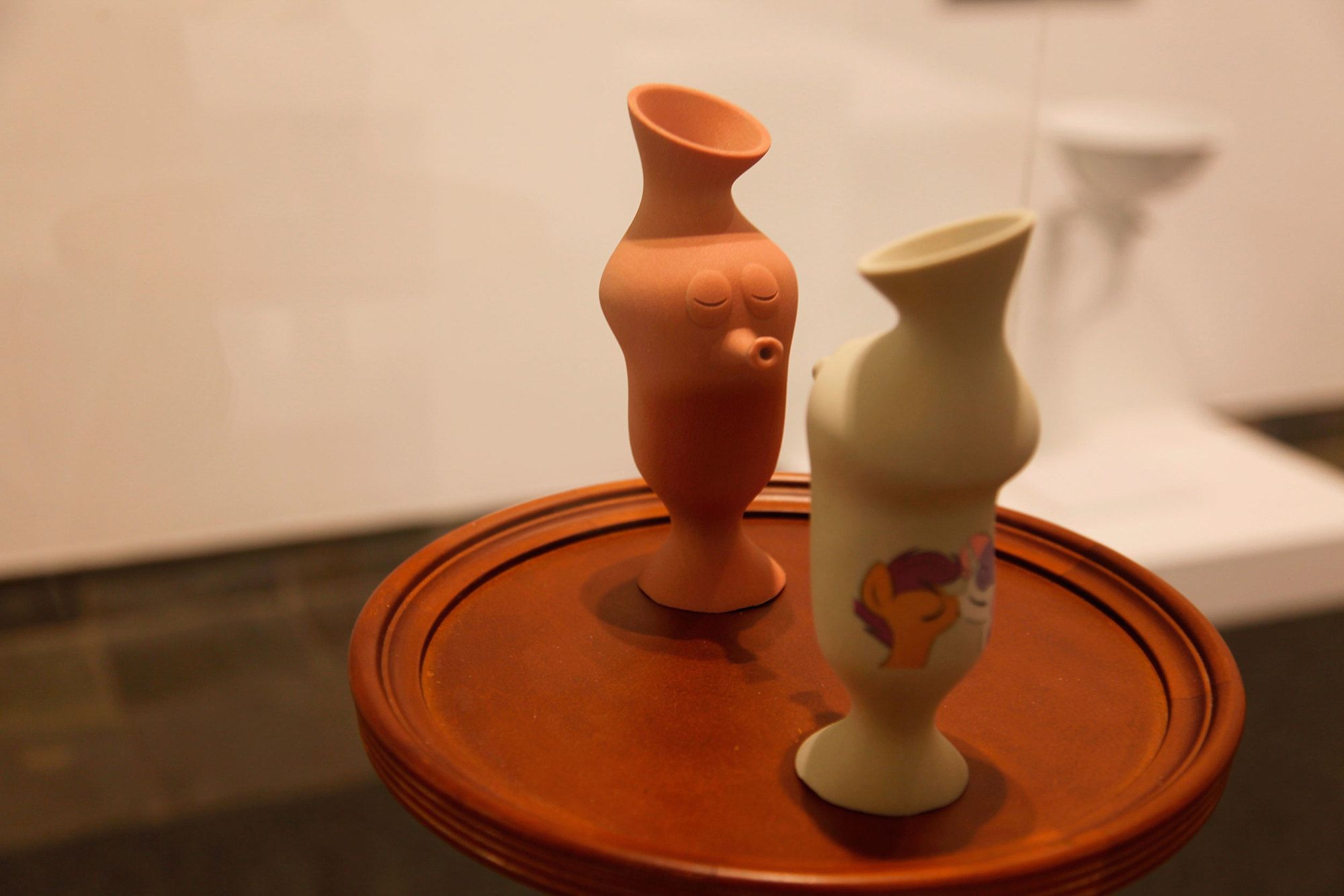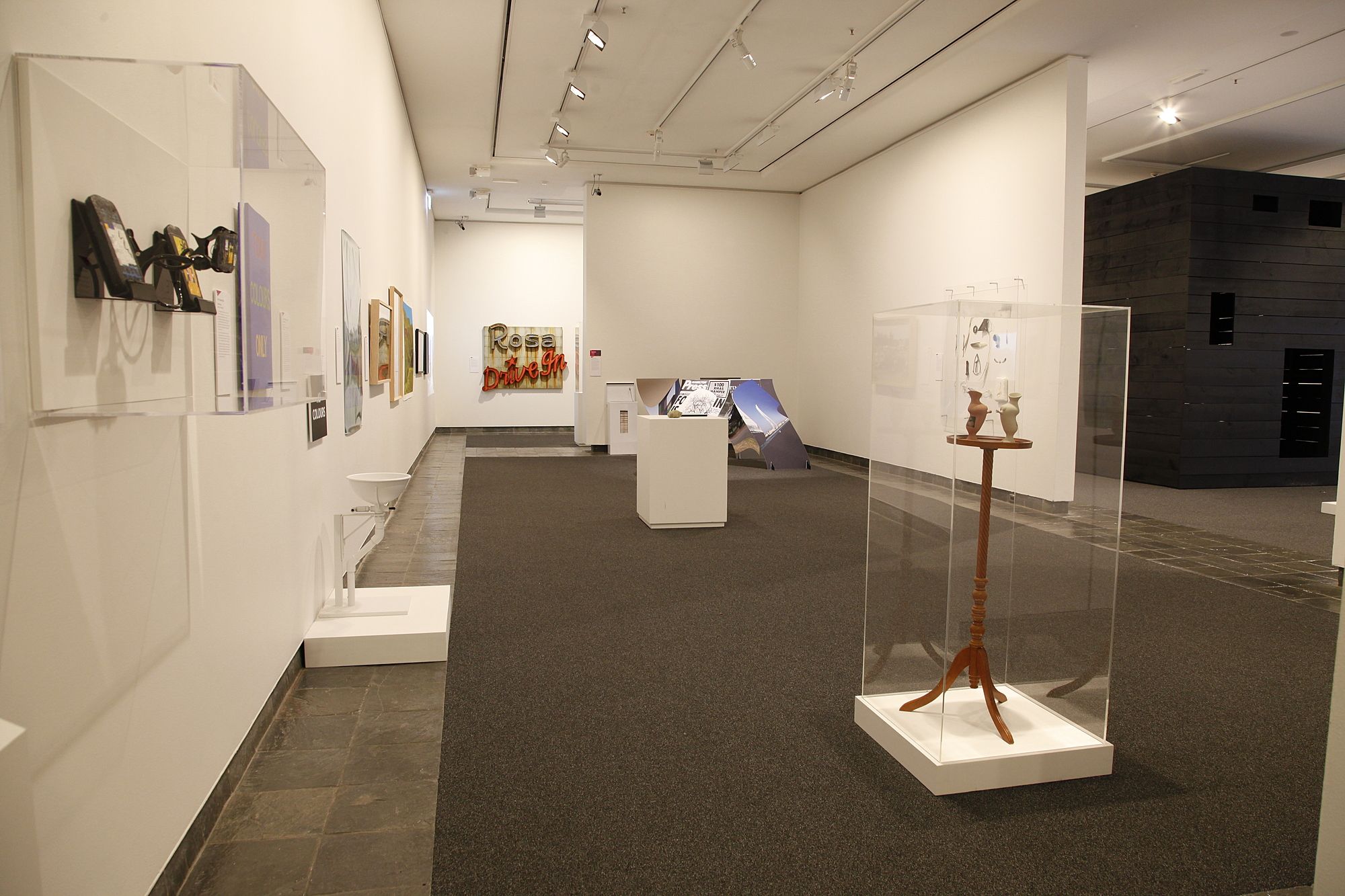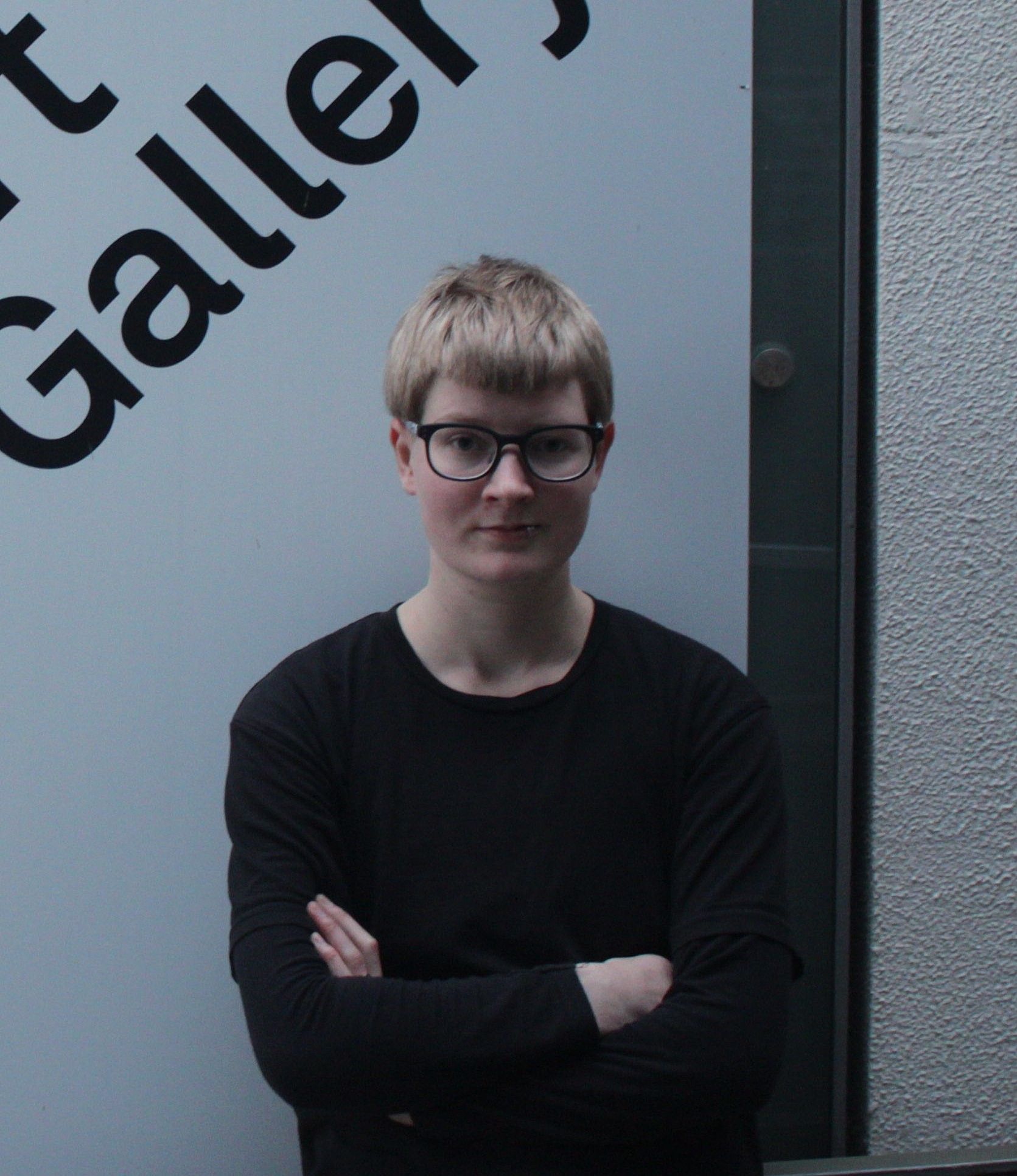My Little Pony as resistance: A review of ‘Good Kisser’
Ellie Lee-Duncan talks pixarvolt and cyber queer subcultures in response to Sorawit Songsataya’s National Contemporary Art Award winning sculpture.
Ellie Lee-Duncan talks pixarvolt and cyber queer subcultures in response to Sorawit Songsataya’s National Contemporary Art Award winning sculpture.
Walking through the 2016 National Contemporary Art Award (NCAA) at Waikato Museum Te Whare Taonga o Waikato, Sorawit Songataya’s work appears a bit, well, humble really. It didn’t demand attention through an extravagant use of surface area, like Jonathan Organ and Jessica Pearless’ looming black box. It didn’t threaten a seizure on epilepsy-suffering onlookers, (or at least cause a bad migraine) like Clara Well’s strobing Monochronic video work. No. Small and slim, Good Kisser is a narrow, wooden circular table topped with two clay-like vase-shaped figures, and the $20,000 prize winner of this years recently closed NCAA.
One white, one terracotta brown, the two figures are leaning in to kiss each other. Each is anthropomorphically stylised with a sinuous ‘s’ curve through the body. Pared back, they feature closed eyes and exaggerated puckering lips. On the surface of each of their backs is a picture – one is an image of two characters from the cartoon My Little Pony kissing, and the other is a photo of a tongue alongside the word 'raw' carved into the sculpture itself.
Seemingly simple, the layers of complexity around this work unravel over time. Although the figures allude to handmade pottery, they lack the primary aspect (an indexical relationship to human hands) that is arguably central to creating with clay. The clay-like figures are actually 3D printed. While the images on each sculpture’s back appear to sit on the surface of the work, they’re actually integrated in the digital printing process. Replicated onto each subsequent layer of the plastic particles, the image is inseparable from the object itself. Divorced from physical contact, the digital production of the vases juxtapose this new creative method with the traditionally carved wooden pedestal. Under any amount of scrutiny, the stand remains solidly unchanging, occupying the same kind of ornamental, wood-turned, familiar and comforting space as the presence of a family heirloom. Here, the technology crowns the traditional.
The tongue is a scan of a tongue licking a scanner bed. It could be anyone's, dislocated from an individual’s body and face.
The two characters, Scootaloo and Sweetie Belle from My Little Pony, sharing a cheeky kiss as well as the tongue and ‘raw’ on the other vase are digital found images, lifted from the internet. The tongue is a scan of a tongue licking a scanner bed. It could be anyone's, dislocated from an individual’s body and face. Songsataya noted that this emphasises the inherent ‘fetishisation/embodiment/disembodiment we have with screen-based digital modalities’.[1] The word ‘raw’ was used from a font available from Sculpteo, a 3D printing company that Songsataya has used in the past. Seen together the lifted elements of word and tongue create and form a narrative suggesting a rawness of viscerality. These images create ambiguous meanings that shift under close interrogation, refusing clear articulation or a conclusive reading. Instead, they function more as indicators of the increasingly visual media dense reality we absorb each day. Songsataya not only draws our attention to this, but also to the accessibility of images of others’ bodies, and how they can be integrated into other lives and art works.
Latent in Good Kisser is the shifting of features and meanings from this continuous plethora of images that we are exposed to. Emphasising the inherent malleability of unrelated found images in the creation of alternative interpretations, and moreover, how we inscribe significance upon the seemingly extraneous stream of images we encounter on a day to day basis.
One reading of Good Kisser could focus on the colour difference of the two amorous sculptures; one white, the other terracotta brown. This reference to different varieties of clay in pottery, might also suggest inter-cultural relationships. As a singular reading this risks over-simplifying the work, yet shifting this to a broader interpretation, we could view this as alluding to inter-cultural practices and diverse, trans-cultural communities. In turning to a simplified, abstracted mode of representation, Songsataya removes the singular from the subjective.
Pixarvolt theory provides a queer lens to viewing My Little Pony (MLP), in which the characters resist homogenous individualism to instead embrace divergence, foster diverse relationships, and communal collectivism.
Songsataya’s use of Pixarvolt theory expands on ideas of diverse and queer communities, and is articulated in his wall text and inclusion of characters from My Little Pony. Pixarvolt theory was coined by queer theorist Jack Halberstam, and looks at how animated films emphasise emotional bonds outside of the realms of romantic or sexual heteronormativity.[2] Monsters Inc, Over the Hedge, and Chicken Run can be seen as examples of the Pixarvolt category. Friendships in these films are formed between allied and unusual groupings of individuals, such as the matriarchal, anarchistic society of creative women seen in Chicken Run.
These queer relationships oppose the saccharine narrative of compulsory heterosexuality, and cisnormativity supported by film giants such as Disney and Pixar. In contrast, non-Pixarvolt films follow the formula of the singular hero/ine who independently solves problems without relying on others’ support, and is restored by the end of the film to a nuclear family domestic life. An example of a non-Pixarvolt film is The Incredibles, which centers around a white, middle class heteronormative man who (overcoming all odds!) solves his mid-life crisis through realising his hyper-masculinity, and role as the leader of his family. In contrast, Pixarvolt theory provides a queer lens to viewing My Little Pony (MLP), in which the characters resist homogenous individualism to instead embrace divergence, foster diverse relationships, and communal collectivism.
Twilight Sparkle essentially experiences a traumatic day of bodily dysphoria. Although the character is not transgender, MLP demonstrates the ways in which we can overlay meaning onto works and how a film can incorporate LGBTQ+ concerns.
Both the MLP programme and subsequent films evoked a passionate following in cyber queer communities. Although initially targeted at young girls, MLP also quickly gained an older male fanbase (‘bronies’) which resisted binary gender expectations and the cult of masculinity. MLP in the past has also responded directly to the concerns of its fanbase, including in its 2013 film Equestria Girls, where character Twilight Sparkle is thrown into a parallel human dominated world, shaped as a human. This film shows Twilight Sparkle grappling with issues such as a deep sense of repulsion and alienation from her body, transition, attempting to pass, and the policing of her body when she chooses which bathroom to use. Twilight Sparkle essentially experiences a traumatic day of bodily dysphoria. Although the character is not transgender, MLP demonstrates the ways in which we can overlay meaning onto works and how a film can incorporate LGBTQ+ concerns.
I suppose there’s something inherently powerful about taking a film or series from pop culture and refashioning it to be read to reflect personal or community ideals. In turning to forms of abstraction and re-presentation of already existing aspects of society, Songsataya opens things up to queer and multilayered readings rather than adhering to the original singular intention of the creator. In this way, his work uses found images to reflect and reinvent pop culture, both through the created romance between the two MLP characters, and through the inclusion of found images on the other vase.
Songsataya’s Good Kisser deals with cyber queer subcultures, queer temporalities, and appropriated messages of queer alliances.
Songsataya’s Good Kisser deals with cyber queer subcultures, queer temporalities, and appropriated messages of queer alliances. It also highlights alternative narratives, such as the overlaid queer reading onto a children’s TV programme. Appropriation of pop culture imagery as a queer collective sidesteps repeated narratives of TV, while also transforming them. Songsataya presents My Little Pony as a show with complex characters. This mirrors a real-life collective, and multi-faceted approach to LGBTQ+ relationships, communities, and identities. The key though is that the message is one of coexistence.
Good Kisser’s strength lies in its multiplicities. NCAA judge Misal Adnan Yildiz, current curator of Artspace, noted that this piece is so simple – two figures about to kiss – that even a child could understand it.[3] On one level, this is completely accurate. The figures are equals, mirroring each other in their stance, hesitating, in the moment before the kiss. Each androgynous, neither gives any conspicuous references or clues to gender. Here, the legibility of gender is erased. Making clear a specific reading of each vase’s gender, sex, orientation, or even ethnicity is not of concern here.
2016 National Contemporary Art Award was at
Waikato Museum Te Whare Taonga o Waikato
3 September – 4 December 2016
All photographs courtesy of the Waikato Museum Te Whare Taonga o Waikato
[1] Sorawit Songsataya, private message to the writer, November 30 2016.
[2] Jack Halberstam, The Queer art of failure, Duke University Press, 2011.
[3] Misal Adnan Yildiz, judge’s gallery talk, Hamilton, 3 August 2016.


